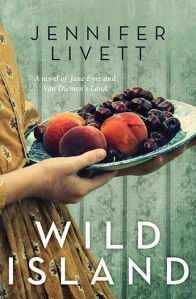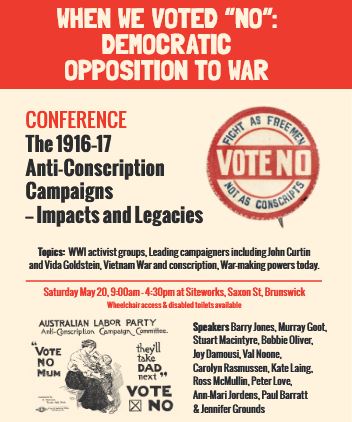
431 p., 2016
From the opening lines of this book, you hear echoes of a book you have read before:
Reader, she did not marry him, or rather, when at last she did, it was not so straightforward as she implies in her memoirs. Jane Eyre is a truthful person and her story is fascinating, but some things she could not bring herself to say. Certain episodes in her past, she admits, ‘form too distressing a recollection ever to be willingly dwelt upon’ .. My name is Harriet Adair, and forty years ago on that ship I was Jane Eyre’s companion (xii)
Thus begin Harriet Adair’s own memoirs, written forty years later. Readers of Jane Eyre have met her before, as Grace Poole, caring for the mad Bertha Mason at Thornfield. But in this telling, Bertha did not die in the fire thus freeing Edward Rochester to marry our Jane. The woman we knew as Grace Poole was really Harriet Adair, and Bertha was instead Anna – not Antoinette as in Wide Sargasso Sea, a model for this book in extrapolating and subverting Jane Eyre into a new story. There was a way in which Edward would be free to marry Jane, but it involved sailing to Van Diemen’s Land to seek out Captain Booth, now a commandant at Port Arthur Penal Settlement, who was the only man who could confirm an earlier marriage that would invalidate Edward’s marriage to Anna (Bertha). Part way along the journey it is decided that Edward and Jane will return to England, and so off they sail back into the northern hemisphere to become shadowy, background characters who tether this book to its original inspiration but play no further role.
There have been other books that have sprung from a much loved story – Wide Sargasso Sea is one; Pemberley is another- but in this book Jennifer Livett has added another level of difficulty. The opening pages have two lists of characters: the first a list of historical characters drawn from the real-life inhabitants of Van Diemen’s Land in the late 1830s and early 1840s; and the second a list of fictional characters, some of whom have been taken from Jane Eyre, others created to mingle with the real-life Hobartians. The research for this book is exhaustive- and exhausting. In her acknowledgments at the rear of the book, the author mentions that this book has been forty years in gestation, and I believe it.
From my own research into Port Phillip at the time that this book was set, I know these historical characters and, for me, there was a little leap of recognition as if I’d seen Tulip Wright (who later turned up in Melbourne) in his brilliant-hued waistcoat, disappearing around a corner. You probably know them too. We’ve met Sir John and Lady Jane Franklin in several books previously (see here and here), and Mathinna from Richard Flanagan’s Wanting makes an appearance. John Gould the bird-artist and his wife Eliza are here too, and there’s even Mad Judge Montagu and Charles Swanston, the bank director whose finances propped up the Port Phillip expedition, now immortalized in one of Melbourne’s main streets.
Livett has a beautiful turn of phrase: take for example her description of black swans, heads-down feeding, looking “like black mops floating on the surface” (p. 245). Her ear for dialogue and her historical felicity are first rate. The details are absolutely accurate but -oh- there are so many of them and I often found myself wondering if a reader less steeped in Tasmanian/Port Phillip politics would find them overwhelming.
One of my favourite quotes about Port Phillip society is the Port Phillip Gazette’s observation that “Melbourne boils over like a bush cauldron with the scum of fierce disputes”. It’s a characterization of colonial life which holds true for many of nineteenth century port towns across the British Empire including Hobart. In this book we are taken to the factional conflict between Sir John Franklin and his colonial secretary John Montagu, an adherent of the Arthurite faction who had prospered under the long governorship of Franklin’s predecessor Lieutenant Governor George Arthur. We are taken to the politics of the transportation policy and its change over time, with the cessation of the assignment system. At times the narrative becomes a vehicle for explaining the politics, and at this point, it threatened to collapse under the weight of so much didacticism and so many peripheral characters.
And yet, even for a reader familiar with this period of Tasmanian history, reading this book brings this history alive, especially the world of middle-class women who have been swept up into the circuits of empire through the postings of their husbands to official positions throughout the Empire. Livett captures well the jostling for position, the grabbing at opportunities that opened up in a settler-colonial economy, the importance of patronage and the censoriousness among women restricted to a round of visiting and levees and balls. She is completely at home with the ‘networks of empire’ conceptualization of colonialism that underpins much recent historiography:
…there are always more connections than we know about, across the widest spaces. So many links between the colony and England, most of them fluid. Water, ink, blood, each carrying its own cargo. Frail ships criss-crossing the seas, their holds packed with innocent-looking objects as dangerous as guns: china tea sets; bolts of flannel; packets of seeds and bank drafts. All bearing the message that there are certain ways in which life must be lived, and ways in which it most assuredly must not.” p 44
At the same time, the author is pulling the strings of the Jane Eyre connection, with the question of whether Rowland Rochester (Edward Rochester’s brother) had ever lived in Tasmania providing the narrative pull of the story. St John Wallace, Jane Eyre’s rather wet (in my opinion) cousin is here with his wife Louisa, and Anna (the former mad Bertha) moves in and out of the story.
It’s a long book, but Livett has maintained Harriet’s narrative voice throughout the alternating chapters which switch between Harriet’s first person point of view and a third-person omniscient narrative. It is this high-wire act of playing out a twist on the Jane Eyre story, while maintaining such historical integrity that most impresses me about this book. But then I find myself wondering: is there such a thing as too much historical integrity? I suspect that there is; and I think that the book threatened to be engulfed by it, even for someone familiar with and appreciative of its fidelity.
And so, my praise for Wild Island is not completely unalloyed. Livett has aimed high, but much though I admire the accuracy and richness of her historical rendering of Van Diemen’s Land, I wonder if it ensnared her in details and explanations that stopped this book from really soaring.
Source: Yarra Plenty Regional Library
My rating: 8/10
I’ve posted this review at the Australian Women Writers Challenge website. 















